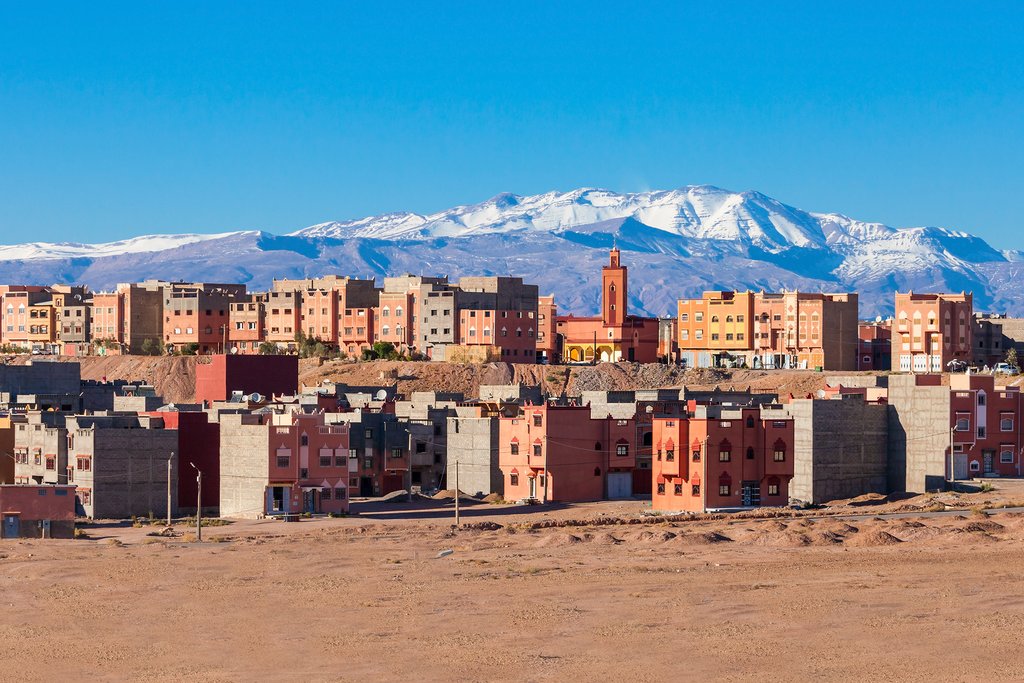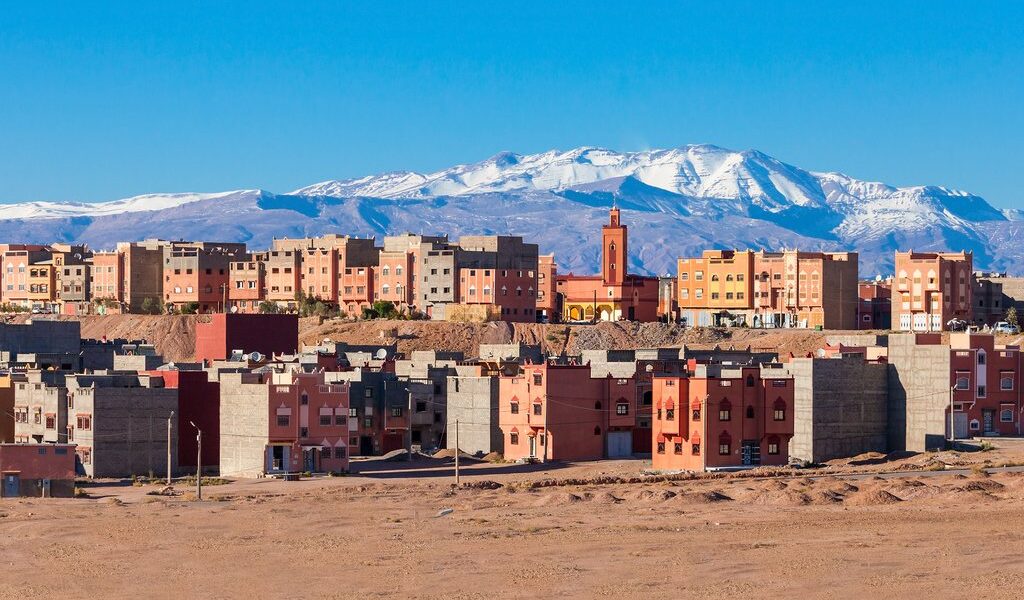
January may be the coldest month of the year in Morocco, but it’s a great time to visit if you’re interested in trekking in the desert and crowd-free sightseeing. Find out what to do and where to go in this monthly guide.
Weather
Morocco experiences a mild winter season, and January falls squarely within this period. However, it’s worth noting that January often holds the distinction of being the coldest month of the year, and also the wettest. Generally speaking, you can expect temperatures to peak in the high 60s Fahrenheit, with lows dipping into the 40s. It’s important to remember that these are general averages, and conditions can vary significantly depending on your location within the country. For instance, the Atlas Mountains can experience much colder temperatures, especially at higher elevations. Conversely, the desert regions can be significantly warmer, even in January. While evenings and nights can be chilly, the days in Morocco during January are frequently warm and sunny, creating pleasant conditions for exploration. Rainfall is a possibility, with an average of seven to eight days of precipitation during the month.
Crowds & Costs
From a sightseeing perspective, January presents an opportune time to discover the wonders of Morocco. A major advantage is the reduced presence of crowds at popular tourist attractions. This allows for a more relaxed and intimate experience when visiting historical sites and cultural landmarks. Furthermore, many hotels offer attractive low-season rates during January, making it a budget-friendly time to travel. Securing accommodations is also generally easier during this period. If you have your heart set on a particular boutique hotel or riad, you’ll find that your chances of booking a stay are significantly better in January—particularly during the latter half of the month, when fewer travelers are competing for available rooms.
Where to Go
Temperatures across Morocco remain relatively mild throughout the month of January, which allows for flexible travel planning. However, major cities such as Marrakech and Tangier tend to experience higher levels of precipitation compared to other regions. It’s advisable to pack an umbrella or raincoat if you plan to spend time in these urban centers. Alternatively, you could choose to completely avoid the rain by venturing towards the desert or the mountains. Destinations like Ouarzazate, offering convenient access to both the Sahara and the High Atlas range, are particularly enjoyable (and typically dry) in January. The clear desert air is inviting during this period of the year.
Another excellent option for January travel is exploring the Atlantic coast, including the charming seaside city of Essaouira. Conditions here tend to be warmer compared to inland locations. It’s crucial to consider that southern Morocco generally experiences milder temperatures than northern Morocco in January. Therefore, the further south you travel, the less you’ll need to layer up with heavy clothing. Plan accordingly and consider the regional temperature variations when packing for your trip.
Chat with a local specialist who can help organize your trip.
What to Do
The relatively cool weather in January makes it an ideal time for outdoor activities. Exploring the Sahara Desert or embarking on a hike in the High Atlas Mountains are both excellent choices. However, it’s important to exercise caution when hiking in the mountains, as rainfall can cause river levels to rise, potentially making some trails impassable. Trekking in the desert is generally a safer and more predictable option during this time of year, offering stunning landscapes and clear skies.
January also provides a tranquil atmosphere for sightseeing in cities like Fes and Marrakech. These cities can become extremely crowded with tourists during the peak season, but in January, you can enjoy a more relaxed and less hectic experience. It’s also a fantastic time to indulge in photography. The winter months in Morocco offer optimal conditions for capturing stunning images, as the air is typically clear and free of dust, providing exceptional visibility and vibrant colors.
January Events
Yennayer. Morocco celebrates Yennayer, also known as the Amazigh New Year, on January 12th and 13th. This festival marks the beginning of the crop year in traditional Berber communities throughout the country. Celebrations are particularly vibrant and lively in the Berber villages of the Middle Atlas Mountains, where locals engage in traditional singing, dancing, and the preparation of special foods. If you are interested in experiencing Yennayer firsthand, consider heading to a town like Agadir or Tiznit, where you can immerse yourself in the cultural festivities.
Anniversary of the Independence Manifesto / Proclamation of Independence. While Morocco’s official independence day is celebrated in March, the country also commemorates its initial attempt at independence from French colonial rule on January 11th. The Proclamation of Independence is recognized as a national holiday in Morocco and is marked by street parades and festive celebrations across the nation.
Traveling to Morocco in January? Check out these great itineraries.
Moroccan Desert & Hiking in the Atlas Mountains. The desert offers cool temperatures, dry conditions, and clear skies in January. This eight-day itinerary begins and concludes in Marrakech (where rain is a possibility), whisking travelers away to the majestic heights of the High Atlas Mountains and the vast expanses of the Sahara Desert. The itinerary also includes the unique opportunity to spend time in the home of a local family.
Morocco Grand Tour: Cities, Desert, & the Coast. Experience a diverse range of landscapes and cultural attractions, from imperial cities to the towering mountains, the enchanting desert, and the captivating coast. This ten-day grand tour of Morocco commences and concludes in Casablanca. Highlights include camping beneath the stars in the desert, engaging in exhilarating kitesurfing activities in the Atlantic, exploring the ancient medina of Fes, and participating in an engaging cooking class where you will learn the art of preparing authentic tagine.
More Helpful Information
Morocco in December
Morocco in February
Best Time to Visit Morocco
Morocco Tour Ideas
B-1632

